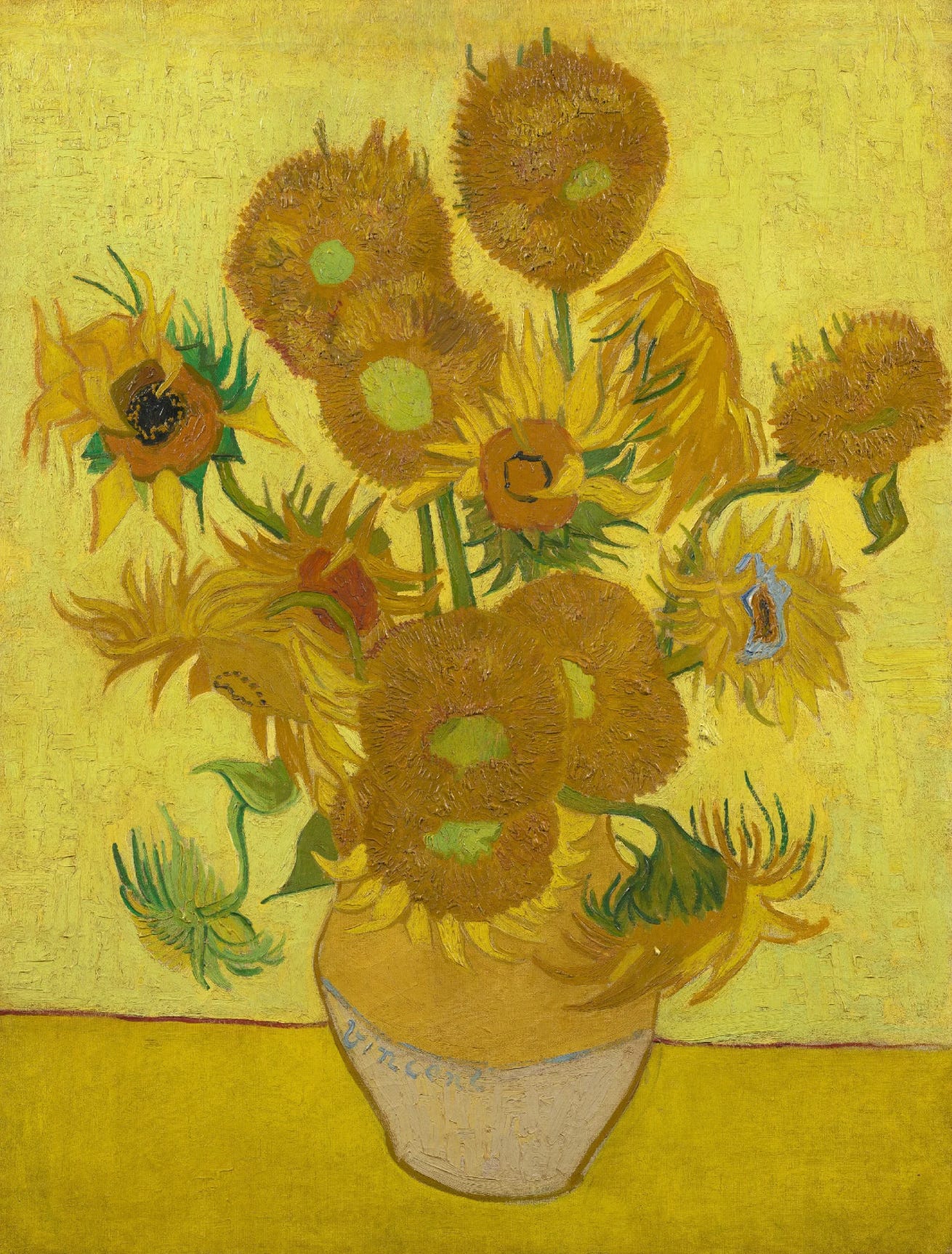the madness, the wheatfields, and the heartbreak of Vincent van Gogh
thoughts from down the rabbit hole: 4.29.25
Today's rabbit hole started with a very personal kind of panic: I'm in my mid-thirties and have a birthday coming up next month, and sometimes I get hit with the feeling that I should have "figured it out" by now—that whatever "my thing" is, it should already be happening. I’ve been reading a book about Vincent Van Gogh’s life, so when I learned that he didn't even seriously pick up a paintbrush until he was almost 30, it resonated with the panic and shook something up inside of me. A much-needed perspective shift. There's still time. There's still room to stumble around and find the thing that “sets my soul on fire” as they say.
I couldn’t stop thinking about how absolutely sideways his life was—how different it is from the shorthand sad, tragic caricature everyone knows (cut off his ear, painted some swirly skies, died). There’s so much more, and most of it feels...weirder, rawer, and somehow even more human.
Anyway, that's what sent me spiraling through everything Vincent today. A little art history and a little reminder that we all suffer from the same condition: human.
Turns out, Vincent didn’t really know what he wanted to be when he grew up either. Before he became an artist, he spent years flailing. He tried being an art dealer (got fired), a schoolteacher (meh), he even taught Bible verses to kids in a poor mining town while trying to become a preacher—yes, a preacher. Vincent wasn't just religious; he was intensely earnest about it. He wanted to live like Christ, which weirded out the church authorities so much they basically kicked him out for being "too extreme." Seems hard to believe, actually.
Even from the beginning, it felt like he gave his whole heart to everything he tried, even when he wasn’t sure if it would work or if it would be welcomed. There was this almost reckless purity to it—this instinct to throw himself fully into whatever flickered with meaning, even if it burned him. It’s kind of heartbreaking, honestly, how much he kept trying to belong somewhere.
That's when he collapsed inward and started drawing.
He mostly drew peasants at first. And many of the drawings were nudes—but not in the glamorous, model-in-a-studio way. These were rough, working-class people. From what I found, he sometimes paid locals to pose for him, and in rural areas, nudity was treated differently—less shame, more matter-of-fact when it came to artists. But a lot of his early work wasn’t full nudes; it was farmers hunched over, women pulling potatoes from the ground, bodies heavy from labor. He was obsessed with the idea of truth through the body—not ideal beauty, but rawness. There’s a roughness in his early drawings, a kind of brute sincerity, like he’s wrestling the figures onto the page.




When it came to drawing, he didn’t sit around waiting for permission or mastery—he just started doing it. He was the original "you can just do things" guy. He mostly taught himself, copying anatomy books, practicing from dusty manuals, figuring it out with this raw, clumsy stubbornness that feels obvious and iconic now. "Drawing is the root of everything," he wrote to his brother Theo in 1880.
When he started painting, it was with this same heavy, earthy style. The Potato Eaters (1885) is probably the best example—five peasants huddled around a tiny table, their hands gnarled like roots. It’s grimy, brown, almost claustrophobic and kind of looks like it was painted with mud. Vincent wanted to show the "honest toil" of peasant life. No frilly impressionist flowers yet. Just tired faces over a meager meal, lit by a single, grudging lamp.

It made me wonder when his style got so bright—because when I think "Van Gogh," I think blinding yellows and feverish blues. Turns out, Paris happened. He landed right in the middle of the Impressionist boom. People like Monet, Degas, Toulouse-Lautrec, and Pissarro were changing everything—painting outside, chasing sunlight, using color in ways that looked insane to traditional critics. Vincent absorbed all of it, but instead of imitating, he mutated it. His colors got brighter, but his brushwork stayed urgent, rough, emotional. Where Monet's water lilies melt, Van Gogh's sunflowers shout.

Surrounded by Impressionists, yet he didn't paint like them. He wasn't blending light softly; he was stabbing and swirling it into the canvas. He took Japanese prints, color theory, peasant reality, biblical yearning, and jammed them together. That’s how his style—the one even a five-year-old can spot now—was born. It wasn’t a style he invented on purpose—it was what poured out when he tried to survive the world with paint.
But even with that new color and energy, the pain didn’t leave him. Which brings us to… the ear. I had always pictured him cutting it off alone in a sad attic somewhere, but the real story is even sadder. In 1888, he was living in Arles, dreaming of starting an artists' community. His friend Paul Gauguin came to stay—and it was a disaster. They fought constantly. Gauguin was egotistical; Vincent was volatile. One night, after a vicious argument (probably about art and fear of abandonment), Vincent suffered a mental break. He sliced off part of his ear—just the lobe, most think—wrapped it in cloth, and gave it to a woman at a brothel. (This could be its own rabbit hole because what??)

After that, his mental health spiraled hard, but rather than just drift into madness, he chose to get help. He voluntarily admitted himself into an asylum at Saint-Rémy-de-Provence. That detail broke something in me when I found it—that he knew he was falling apart, and he tried, in his own way, to hold on.
Keep reading with a 7-day free trial
Subscribe to wild bare thoughts to keep reading this post and get 7 days of free access to the full post archives.








